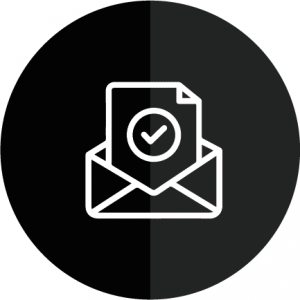Are you finding it challenging to fully unlock the potential of your key accounts despite your best efforts? You’re not alone. Many organisations struggle to align their account strategies with broader business objectives, leading to missed opportunities and stagnant growth.
But what if there was a way to turn your key accounts into significant growth drivers? In this guide, we’ll delve into strategic account planning, a process designed to maximise the value of your most important clients.
- Strategic Account Planning Framework: Implement a strategic account planning framework to ensure your key accounts align with your organisation’s growth objectives, enhancing both client satisfaction and revenue potential.
- Account Segmentation: Prioritise account segmentation to focus resources on clients with the highest growth potential, ensuring that your efforts are targeted and effective.
- Tailored Value Propositions: Develop customised value propositions for each key account, highlighting how your solutions uniquely address their specific needs and challenges.
- Action Plan Development: Create detailed action plans that outline the steps, timelines, and resources required to achieve your strategic account goals, ensuring all team members are aligned and focused.
- Relationship Management: Invest in building strong, trust-based relationships with decision-makers within your key accounts to foster long-term loyalty and collaboration.
- Technology Integration: Utilise CRM systems and data analytics to track account performance and adjust strategies in real time, ensuring your approach remains relevant and effective.
What is Strategic Account Planning?
Strategic account planning, also known as strategic account management, is the structured process of cultivating value-driven relationships with your most crucial customers. The goal is to foster long-term development, retention, and ultimately, maximise revenue potential. At its core, strategic account planning centres on deepening relationships that are mutually beneficial, aligning with the long-term objectives of both the business and the client.
The process is often synonymous with key account planning. However, strategic account management is inherently complex, encompassing numerous stages such as planning, documenting, presenting, training, and reviewing. These complexities are present at every level of the account planning process, demanding careful attention to detail and precision.
A 2016 Sales Enablement Optimisation Study by CSO Insights revealed that 90.6% of surveyed sales professionals acknowledged the importance of strategic account planning, with the majority actively engaging in the practice. This underlines the necessity for key account managers to develop comprehensive, best-practice-driven strategic account management plans that serve both the short and long-term needs of their accounts.
What Matters Most?
To build a strong account planning framework, the first strategic priority is typically securing alignment across internal teams and client stakeholders. This avoids friction later in the process. Furthermore, marketers who strategically co-create solutions with their accounts see deeper trust and stronger results. Embedding account planning into your client’s long-term business goals, not just immediate needs, often unlocks untapped growth opportunities, making the relationship future-proof.Get In Touch
Other Terms for Account Planning
While the term strategic account planning is widely used, it’s important to note that account planning can be referred to by various other terms, each carrying its own nuances:
- Account mapping: A process focused on identifying and highlighting the key contacts and decision-makers within an organisation.
- Sales account planning: This refers to the integration of planning within the sales process itself, designed to drive specific sales outcomes.
- Stakeholder mapping: Closely related to account mapping, this involves a detailed understanding of the organisation’s key decision-makers, including their needs and objectives.
- Strategic account planning: As the name suggests, this term is focused on the long-term vision and planning, ensuring that each account’s approach aligns with broader business objectives.
- Key account plan: An in-depth analysis of the client’s business, covering market position, challenges, and opportunities. This plan includes a tailored strategy for nurturing the relationship, ensuring the client’s needs are met, and maximising the account’s long-term value.
Why is Strategic Account Planning Important?
Close Deals Faster
Generating fresh leads takes time, effort, and resources. However, when leveraging existing relationships through strategic account planning, sales professionals can significantly accelerate the closing process. Much of the groundwork, such as establishing trust and overcoming initial buying objections, is already in place. Sales teams are familiar with key stakeholders, fully understand how these customers prefer to engage, and can streamline the path to purchase.
Having a direct line of communication with existing clients makes it easier for sales teams to grasp customer needs with clarity and precision. This is particularly vital in a landscape where, according to a survey of over 1,200 COOs and operational executives, 63% cited understanding customer needs as a key challenge. Furthermore, 61% of respondents expect that shifts in customer behaviour will disrupt their industries within five years. Despite this, only 25% feel confident in their ability to deliver a distinct, valuable customer experience.
Through effective strategic account development, sales professionals gain early insights into evolving customer needs and can adapt quickly to these changes. This proximity to the client is crucial for success, allowing sales teams to not only receive key information early but also fully comprehend the factors influencing the customer’s decision-makers.
Reduce Acquisition Costs
Acquiring new customers is expensive, especially when it involves navigating unfamiliar territory. The research required to uncover customer motivations, challenges, and drivers often entails looking in from the outside, which can make the process more cumbersome and costly.
However, focusing on existing accounts through a well-structured strategic account planning process enables sales professionals to gain insider insights that would otherwise be inaccessible. By cultivating deeper relationships with key decision-makers, they can develop a more comprehensive understanding of the customer’s needs, resulting in more effective solutions.
Reducing acquisition costs not only leads to more efficient spending but also minimises the risk of customer churn. Continuously moving from one customer to the next can be costly. Consider the time invested in contract negotiations—legal work, pricing discussions, and customisation take time and resources long after the deal is closed. By nurturing a long-term relationship with existing clients, rather than focusing on a series of short-term interactions, sales professionals can yield greater revenue and foster more sustainable business growth.
Retain High-Value Relationships
The value of a strong relationship cannot be overstated. Losing a key account can have significant financial consequences, making it crucial to maintain and nurture these connections. Relationships with clients are always at risk from competitors who are eager to capitalise on any gaps in service or communication. Therefore, consistent, proactive communication is essential to staying attuned to your customer’s needs.
By maintaining a consistent dialogue, sales professionals can gain real-time insights into the shifting priorities and goals of their customers. This enables them to act swiftly, leveraging the most important driver in closing deals—the customer’s time frame. Understanding internal deadlines helps the sales team maintain momentum, ensuring they are aligning with the customer’s needs at the right time.
Additionally, when retaining priority relationships, sales professionals gain a deeper understanding of why a customer is seeking a solution and why they need it immediately. Whether the motivation is driven by a specific event, an internal initiative, or the need for measurable results, understanding the underlying drivers helps guide the sales process and ensures that the proposed solution resonates with the customer’s core objectives.
What is the Responsibility of an Account Manager?
What is an Account Manager?
An account manager serves as the primary liaison between your company and its most valuable customers. Their main objective is to cultivate and maintain strong, lasting relationships with these key accounts, ensuring customer satisfaction, driving retention, and increasing revenue over time.
To achieve these goals, account managers must consistently engage with customers, ensuring they have a thorough understanding of client needs. They then work collaboratively with internal teams to deliver tailored solutions that meet those needs effectively.
It’s important to note that the responsibilities of an account manager differ significantly from those of account executives (AEs). While AEs focus on the broader sales process—acquiring new clients and closing initial deals—account managers are dedicated to post-sales relationships. Their role is more strategic, focusing on nurturing existing clients and maximising the long-term value of these accounts.
The role of a customer success manager (CSM) may seem similar, as both focus on maintaining customer satisfaction. However, a CSM’s primary function is to ensure clients achieve their desired outcomes, overseeing key tasks like onboarding and ongoing support. In contrast, account managers are more revenue-oriented, always seeking win-win opportunities that benefit both the client and the business through strategic account planning.
What Does an Account Manager Do?
The responsibilities of an account manager can vary across organisations, but typically include the following key tasks:
- Managing Customer Relationships
As the main point of contact for key clients, the account manager ensures open lines of communication, quickly addressing any concerns and ensuring client needs are met in a timely, efficient manner. Clear and consistent dialogue is critical for maintaining trust and satisfaction. - Driving Revenue Growth and Retention
A key part of the strategic account management plan is to ensure customers are gaining maximum value from the product or service. This not only builds trust but ensures that when renewal periods arise, there is minimal resistance. Account managers look for mutually beneficial opportunities that align company offerings with customer needs, often uncovering new upsell or cross-sell possibilities within the account. - Resolving Client Issues and Concerns
Throughout the relationship, issues are bound to arise. Account managers are responsible for resolving these issues quickly and effectively. They collaborate closely with internal teams—whether it’s product development, customer support, or sales—to ensure that client feedback is considered and that solutions are delivered in a timely manner. - Developing Account Strategies
Successful strategic account management requires tailored plans that address the unique goals and challenges of each client. Account managers are responsible for crafting these strategies, setting clear goals, and outlining tactics to drive the relationship forward. A proactive approach is essential, ensuring that both the company and the client benefit from the relationship over time. - Monitoring Account Performance
To ensure the strategic account planning process is effective, account managers track key performance indicators (KPIs) and relevant sales metrics. This allows them to measure the success of their plans, identify any areas for improvement, and adjust strategies accordingly. Regular check-ins with key stakeholders on both sides help ensure the plan remains aligned with the client’s evolving needs. - Gathering Customer Feedback and Insights
Gathering feedback is essential for maintaining the health of a relationship. Account managers actively solicit insights from clients regarding their experiences, preferences, pain points, and potential opportunities. This valuable information is used to inform broader business decisions, whether it’s product development, refining marketing strategies, or improving customer support processes.
Source: McKinsey
What are the 4 stages of strategic account planning?
Stage 1
Once you’ve completed the company overview, the next step in the strategic account planning process is to identify the client’s primary challenges. It’s crucial to avoid assumptions here—open-ended questions can help you uncover the root cause of any issues. Lead with curiosity and listen carefully to the responses.
Here are some probing questions to guide your discovery process:
- What specific challenges is the organisation facing within its industry?
- Can you provide a recent example of how these challenges impacted operations?
- What strategies have you implemented to address these challenges, and were they successful?
- What are your current goals and objectives?
- What’s the biggest obstacle preventing you from achieving these goals?
- How does this obstacle affect your customers?
- What happens if the issue remains unresolved?
Once you’ve gathered enough information, validate your understanding by summarising the problem. For example: “Based on our conversation, it seems the primary challenge you’re facing is XYZ. Would you say this accurately reflects your situation?” This approach ensures clarity and avoids making unwarranted assumptions.
Stage 2
Understanding the urgency behind a client’s need for change is another critical element in the strategic account management process. This stage helps assess why immediate action is necessary. To determine this, consider the following factors:
- Timeline: When does the client need to implement changes? Are there any external pressures, such as market shifts or organisational deadlines?
- Consequences of inaction: If the client does not act, what are the potential risks or costs? How can your solution mitigate these risks?
- Value: What specific value does your solution offer? Is this value clearly recognised and acknowledged by the client?
This stage ensures that you and the client are aligned on why immediate action is essential and the specific benefits your solution brings.
Stage 3
Once the problem and urgency have been established, it’s time to demonstrate why your solution is the best fit for the client’s needs. This part of the strategic account planning process involves a thorough analysis of the competitive landscape, highlighting how your offering outperforms others.
Key areas to address include:
- Use case/scope of opportunity: Clearly outline how your solution directly addresses the client’s challenges.
- Next best alternative: Acknowledge other options the client might be considering and explain why your solution stands out.
- Unique selling points: What makes your product or service uniquely effective compared to the competition?
- Concerns: If the client has any reservations, address them head-on with clear and confident responses.
If you’re dealing with an existing customer, this process will differ slightly. Focus on aspects such as:
- Customer age: How long has the client been using your product or service?
- Renewal status: Have they already renewed? If so, when?
- Usage patterns: Are they fully utilising your offering? If not, why?
- Adoption: Is the client leveraging your product’s full potential?
These insights will help you tailor your strategic account management plan to the client’s specific situation.
Stage 4
The people element is critical to successful account planning. This stage involves mapping out the key players involved in the decision-making process and understanding their roles and influence. To ensure your outreach resonates with each stakeholder, you’ll need a clear understanding of the following:
- Key contacts: Who are the primary decision-makers? What roles do they play within the organisation, and what level of influence do they hold?
- Relationship dynamics: How do these individuals perceive your company and solution? What is the nature of their relationship with your business?
- Other contacts: Are there additional influencers or decision-makers you haven’t yet engaged with? Identifying and targeting key executives, such as the CFO or COO, can be crucial.
- Partners: Are there third-party partners involved in the account, such as Salesforce, SAP, or IBM? What influence do they exert over the final outcome?
- Engagement history: Who from your organisation has engaged with this client? This could include interactions with customer success, compliance, product development, or even the C-suite.
Understanding the people involved helps ensure that your strategic account management efforts are tailored to the unique dynamics of the client’s organisation, increasing the likelihood of successful outcomes.
Our Tactical Recommendations
Mapping accounts based on actual buying intent signals can more effectively prioritise efforts and shorten the sales cycle. Additionally, we find that simplifying account plans so they are client-friendly increases both comprehension and engagement on the client side. Moreover, continuously nurturing non-buying influencers within the account often leads to previously unexpected sales momentum.Get In Touch
What are the best practices for key account management?
Personalise Your Service
It’s essential to recognise that what works for one client may not work for another. A personalised approach is key to optimising strategic account planning. By cultivating close relationships with key individuals within your client’s organisation, you can gain valuable insight into their specific needs and objectives. Tailor your approach to these unique requirements, ensuring that you are not simply following a standardised process. Clients can easily sense when you’re going through the motions, which often leads to dissatisfaction. By fostering a closer relationship with your strategic accounts, you can avoid this pitfall and significantly improve customer satisfaction and retention.
Implement a Four-Step Approach to Account Planning
Many sales teams are given a basic template and instructed to “build your account plans.” However, without clear guidance and structure, this often results in a wide variation in the quality and depth of the plans produced. To overcome this inconsistency, here’s a proven four-step approach that ensures comprehensive and effective strategic account management.
Territory Planning
Begin by segmenting your territory to identify which customers and prospects require detailed account planning. Use specific metrics to categorise each account:
- The Current Segment describes your existing relationship with the client.
- The Target Segment outlines how you aim to develop that relationship in the future.
For all strategic customers, you need a detailed strategic account management plan that explains how you will nurture and maintain the relationship. For other accounts, focus on developing plans where there is potential for significant growth. If your goal is to move an account from “Steady” to “Strategic Customer” status, outline the steps required to achieve this transition.
Account Planning
Create tailored account plans for each customer or prospect where there is an opportunity to evolve the relationship. These plans should be data-driven, with clear goals aligned to the client’s business needs and challenges.
Objective Planning
Your objectives should breathe life into the goals within each strategic account management plan. Objectives need to be specific, measurable, and directly linked to key milestones in the client’s journey. Make sure your objectives are focused on delivering mutual value for both your organisation and the client.
Opportunity Co-Creation
This step requires ongoing collaboration with your customer. Engage directly with the client to co-create opportunities that benefit both parties. This partnership-driven approach not only strengthens the relationship but also ensures that the strategic account planning process remains aligned with the customer’s evolving needs.
Source: Prolifiq.ai
Managing Complex Customers: Multiple Account Plans
In many cases, your customer or prospect may be part of a large organisation with multiple divisions, departments, or geographic regions. A common challenge is deciding whether to create one overarching account plan or multiple, tailored plans for each segment. The best practice here is twofold:
- Create a Strategic Account Plan for Each Decision-Making Unit
If each division or business unit operates independently and is responsible for its own buying decisions, then each one should have a unique strategic account management plan. This allows for a more targeted approach, ensuring that the plan meets the specific needs of each unit. - Coordinate and Collaborate Across Plans
If the organisation’s headquarters makes centralised buying decisions, then a single account plan may suffice. However, it’s important not to assume that other divisions have no influence over the decision-making process. Ensure that all plans are well-coordinated and that there is collaboration across the various business units to maintain alignment with the overall company objectives.
Know Your Clients Inside Out
To succeed in strategic account management, you need to truly understand your client’s business—inside and out. Each organisation has its own culture, personality, and set of objectives. It’s essential to grasp what drives your customers, what they aim to achieve, and why. Ask yourself:
- What is their business model?
- What’s the current state of their industry?
- What are their short- and long-term goals?
- How can your organisation help them realise these goals?
The deeper your understanding of your key customers, the better equipped you’ll be to offer tailored solutions that address their specific needs. This insight allows you to deliver a more personalised service that aligns with their strategic objectives, thereby optimising the strategic account planning process and driving long-term value for both parties.







